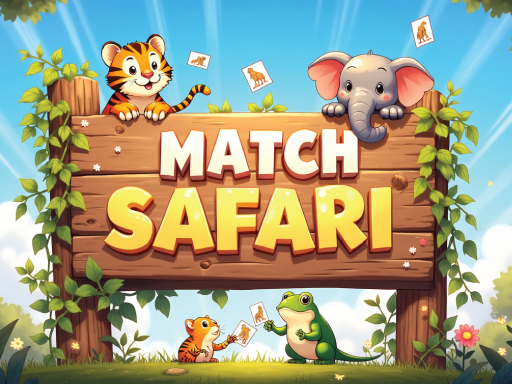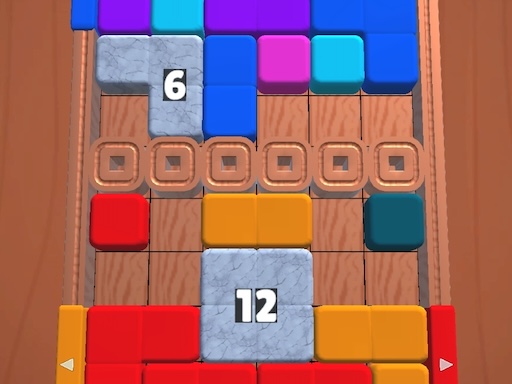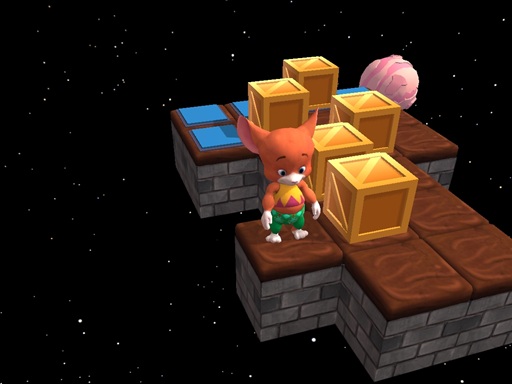Labyrinth of Dread
About Labyrinth of Dread
Okay, so listen, I’ve just got to tell you about this game I stumbled upon, and honestly, it’s completely blown me away. You know how sometimes you’re just scrolling, looking for something new, and then BAM! – you hit a title that just *clicks*? That’s exactly what happened with *Labyrinth of Dread*. And I mean, I know what you’re thinking, "Another horror game? Another maze?" But no, this is different. This is… an experience.
I’ve always been drawn to games that really mess with your head, the ones that don’t just throw jump scares at you but build a genuine sense of unease, that creeping dread that makes the hairs on your arms stand up. And I’ve definitely played my share of those classic internet maze games, the ones that promise a cheap scare and usually deliver, but then you forget them five minutes later. *Labyrinth of Dread* takes that concept, that fundamental idea of being lost in a dark, twisting environment, and elevates it into something truly artful and terrifying. It’s like someone took all the best parts of psychological horror, mixed it with incredibly clever environmental puzzles, and then poured it into a digital labyrinth designed specifically to push your limits.
From the moment you start, you’re just dropped into this oppressive darkness. The visuals aren’t about hyper-realistic gore; they’re about atmosphere. You can almost feel the damp, cold air seeping from the screen. The light source you have, usually just a flickering torch or a dying phone screen, barely cuts through the gloom, casting these long, dancing shadows that play tricks on your eyes. And the sound design? Oh man, the sound design is a masterpiece. Every creak, every distant moan, every rustle of something unseen – it’s all meticulously crafted to make you feel utterly alone and incredibly vulnerable. I remember one time, I was just navigating a particularly tight corridor, and there was this almost imperceptible *scrape* sound from behind me. I swear my heart leaped into my throat. I spun around, flashlight beam cutting through the black, and there was nothing. Just the echoing silence. That’s the kind of subtle terror this game excels at. It’s not about what you *see*; it’s about what you *don’t see*, what your mind conjures in the absence of information.
What I love about games like this is how they force you to slow down, to really *listen* and *observe*. You can’t just sprint through *Labyrinth of Dread*. Well, you *could*, but you wouldn’t last five minutes. This isn’t a run-and-gun. This is a deliberate, methodical crawl through an environment that actively wants to confuse and disorient you. The maze itself is a character, constantly shifting, revealing new paths, or sometimes, cruelly, closing off old ones. You’ll find yourself drawing mental maps, or even physical ones if you’re hardcore enough, trying to keep track of where you’ve been, where you need to go. And just when you think you’ve got a handle on the layout, the game throws a curveball. A wall that wasn’t there before, a door that’s suddenly unlocked, or a path that leads to an entirely different section than you remember. It’s brilliant, honestly, because it keeps you perpetually off-balance, that much more susceptible to the scares.
But here’s the thing, the real magic, the reason I’m so excited about this in the "Puzzles" category, is how seamlessly the puzzles are woven into the horror. This isn’t just a maze where you avoid monsters; it’s a maze where *solving the maze is the puzzle*, and the horror is the consequence of failing or taking too long. You’re not just looking for an exit; you’re looking for *answers*. You’ll encounter cryptic symbols etched into walls, strange mechanisms that require a specific sequence of actions, or environmental cues that only make sense if you’ve been paying attention to the subtle lore scattered throughout the environment.
I remember this one section where I was stuck in a room with four identical doors. Each one led to a short, dead-end corridor, but something felt off. I must have gone through each one a dozen times, getting increasingly frustrated, the ambient sounds of the labyrinth pressing in on me, making me feel claustrophobic. Then, I noticed it. A faint, almost imperceptible scratch mark on the floor near one of the doors, mirroring a similar mark on a pillar in the main room. It was a tiny detail, easily missed in the low light and mounting tension. But when I followed the line of sight, it pointed to a specific sequence of the doors. It wasn’t a code; it was a *path*. The satisfaction of that "click" moment, when a strategy finally locks into place, is immense. It’s not just about getting past a barrier; it’s about feeling like you’ve outsmarted the labyrinth itself, even if just for a moment.
And that’s where the emotional connection truly comes in. That rush of adrenaline isn’t just from a jump scare; it’s from the realization that you’ve been observed, that something is *watching* you, learning your patterns. The frustration of being lost for what feels like an eternity makes the eventual breakthrough, the discovery of a hidden passage or the solution to a particularly gnarly riddle, feel like a genuine triumph. You feel every step, every hesitant turn, the weight of the unknown pressing down on you. When you finally solve a complex puzzle, and a new path opens up, there’s this incredible mix of relief and renewed dread. Relief that you’re moving forward, but dread because you know whatever lies ahead is probably even worse.
The brilliant thing about this is that the game never feels unfair. Challenging, absolutely, but fair. Every puzzle has a logical solution, every scare is earned. It’s not about cheap tricks; it’s about brilliant design that plays on your instincts and your fears. You’ll find yourself scrutinizing every pixel, listening for every faint whisper, because you know the answer, or the next threat, could be hidden in the most innocuous detail. This makes me wonder how many subtle clues I’ve missed on my first playthroughs, how much deeper the rabbit hole goes.
Honestly, it’s the kind of game that sticks with you long after you’ve turned it off. You’ll be thinking about those puzzles, those moments of sheer terror, that feeling of being utterly alone in a place that shouldn’t exist. It’s not just a game; it’s an experience in primal fear and intellectual challenge, wrapped up in a package that feels incredibly fresh despite drawing from a well-known genre. If you’re like me, if you appreciate games that truly test your courage and your wits, that make you lean forward in your chair, heart pounding, then you absolutely have to check out *Labyrinth of Dread*. Trust me on this one. You won't regret it. Well, you might regret it a little when you're screaming, but you'll definitely appreciate it.
I’ve always been drawn to games that really mess with your head, the ones that don’t just throw jump scares at you but build a genuine sense of unease, that creeping dread that makes the hairs on your arms stand up. And I’ve definitely played my share of those classic internet maze games, the ones that promise a cheap scare and usually deliver, but then you forget them five minutes later. *Labyrinth of Dread* takes that concept, that fundamental idea of being lost in a dark, twisting environment, and elevates it into something truly artful and terrifying. It’s like someone took all the best parts of psychological horror, mixed it with incredibly clever environmental puzzles, and then poured it into a digital labyrinth designed specifically to push your limits.
From the moment you start, you’re just dropped into this oppressive darkness. The visuals aren’t about hyper-realistic gore; they’re about atmosphere. You can almost feel the damp, cold air seeping from the screen. The light source you have, usually just a flickering torch or a dying phone screen, barely cuts through the gloom, casting these long, dancing shadows that play tricks on your eyes. And the sound design? Oh man, the sound design is a masterpiece. Every creak, every distant moan, every rustle of something unseen – it’s all meticulously crafted to make you feel utterly alone and incredibly vulnerable. I remember one time, I was just navigating a particularly tight corridor, and there was this almost imperceptible *scrape* sound from behind me. I swear my heart leaped into my throat. I spun around, flashlight beam cutting through the black, and there was nothing. Just the echoing silence. That’s the kind of subtle terror this game excels at. It’s not about what you *see*; it’s about what you *don’t see*, what your mind conjures in the absence of information.
What I love about games like this is how they force you to slow down, to really *listen* and *observe*. You can’t just sprint through *Labyrinth of Dread*. Well, you *could*, but you wouldn’t last five minutes. This isn’t a run-and-gun. This is a deliberate, methodical crawl through an environment that actively wants to confuse and disorient you. The maze itself is a character, constantly shifting, revealing new paths, or sometimes, cruelly, closing off old ones. You’ll find yourself drawing mental maps, or even physical ones if you’re hardcore enough, trying to keep track of where you’ve been, where you need to go. And just when you think you’ve got a handle on the layout, the game throws a curveball. A wall that wasn’t there before, a door that’s suddenly unlocked, or a path that leads to an entirely different section than you remember. It’s brilliant, honestly, because it keeps you perpetually off-balance, that much more susceptible to the scares.
But here’s the thing, the real magic, the reason I’m so excited about this in the "Puzzles" category, is how seamlessly the puzzles are woven into the horror. This isn’t just a maze where you avoid monsters; it’s a maze where *solving the maze is the puzzle*, and the horror is the consequence of failing or taking too long. You’re not just looking for an exit; you’re looking for *answers*. You’ll encounter cryptic symbols etched into walls, strange mechanisms that require a specific sequence of actions, or environmental cues that only make sense if you’ve been paying attention to the subtle lore scattered throughout the environment.
I remember this one section where I was stuck in a room with four identical doors. Each one led to a short, dead-end corridor, but something felt off. I must have gone through each one a dozen times, getting increasingly frustrated, the ambient sounds of the labyrinth pressing in on me, making me feel claustrophobic. Then, I noticed it. A faint, almost imperceptible scratch mark on the floor near one of the doors, mirroring a similar mark on a pillar in the main room. It was a tiny detail, easily missed in the low light and mounting tension. But when I followed the line of sight, it pointed to a specific sequence of the doors. It wasn’t a code; it was a *path*. The satisfaction of that "click" moment, when a strategy finally locks into place, is immense. It’s not just about getting past a barrier; it’s about feeling like you’ve outsmarted the labyrinth itself, even if just for a moment.
And that’s where the emotional connection truly comes in. That rush of adrenaline isn’t just from a jump scare; it’s from the realization that you’ve been observed, that something is *watching* you, learning your patterns. The frustration of being lost for what feels like an eternity makes the eventual breakthrough, the discovery of a hidden passage or the solution to a particularly gnarly riddle, feel like a genuine triumph. You feel every step, every hesitant turn, the weight of the unknown pressing down on you. When you finally solve a complex puzzle, and a new path opens up, there’s this incredible mix of relief and renewed dread. Relief that you’re moving forward, but dread because you know whatever lies ahead is probably even worse.
The brilliant thing about this is that the game never feels unfair. Challenging, absolutely, but fair. Every puzzle has a logical solution, every scare is earned. It’s not about cheap tricks; it’s about brilliant design that plays on your instincts and your fears. You’ll find yourself scrutinizing every pixel, listening for every faint whisper, because you know the answer, or the next threat, could be hidden in the most innocuous detail. This makes me wonder how many subtle clues I’ve missed on my first playthroughs, how much deeper the rabbit hole goes.
Honestly, it’s the kind of game that sticks with you long after you’ve turned it off. You’ll be thinking about those puzzles, those moments of sheer terror, that feeling of being utterly alone in a place that shouldn’t exist. It’s not just a game; it’s an experience in primal fear and intellectual challenge, wrapped up in a package that feels incredibly fresh despite drawing from a well-known genre. If you’re like me, if you appreciate games that truly test your courage and your wits, that make you lean forward in your chair, heart pounding, then you absolutely have to check out *Labyrinth of Dread*. Trust me on this one. You won't regret it. Well, you might regret it a little when you're screaming, but you'll definitely appreciate it.
Enjoy playing Labyrinth of Dread online for free on Petlg Games. This Puzzle game offers amazing gameplay and stunning graphics. No downloads required, play directly in your browser!
How to Play
Mouse for the computer finger for a mobile device





Comments
This game is awesome! I love the graphics and gameplay.
One of the best games I've played recently. Highly recommended!